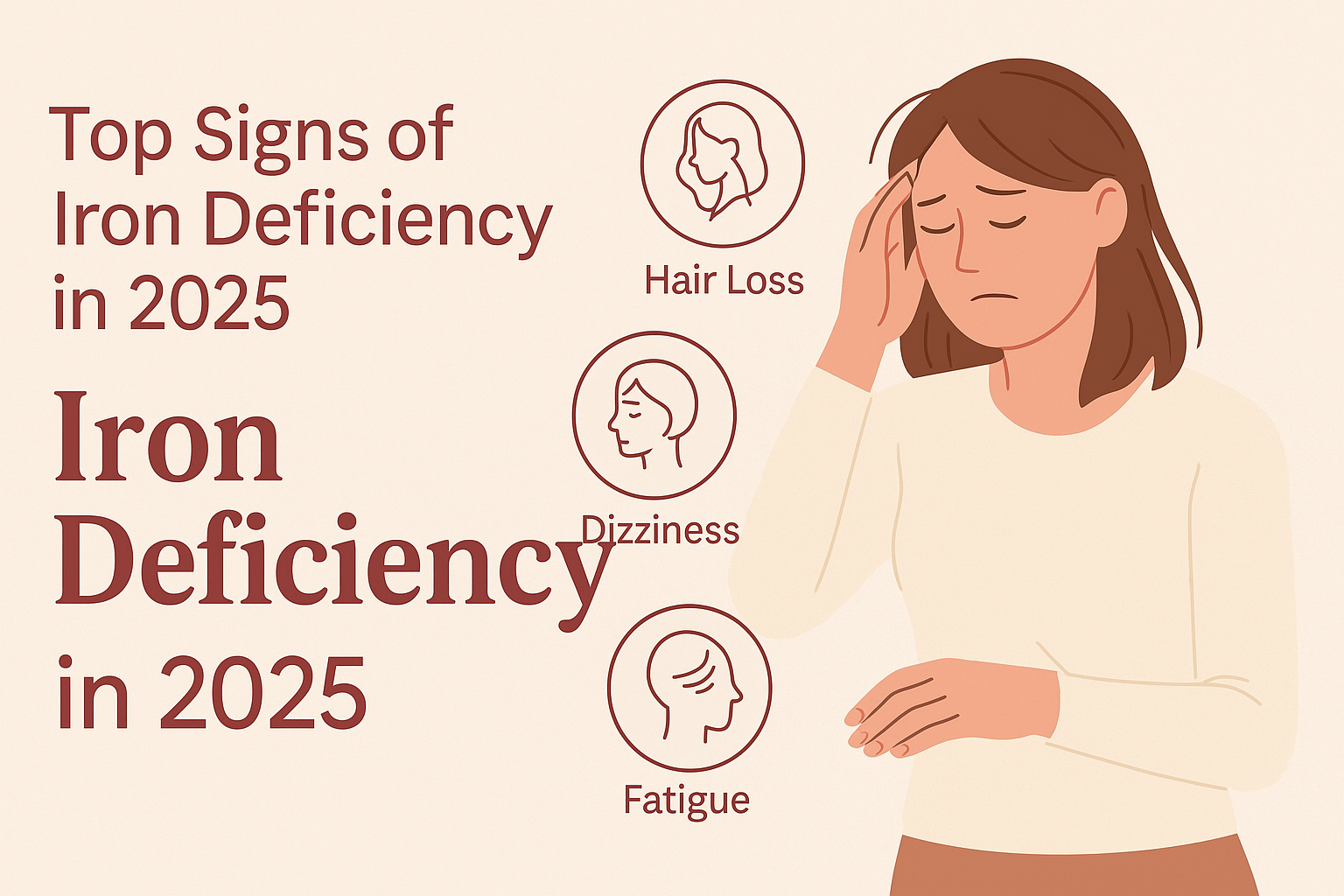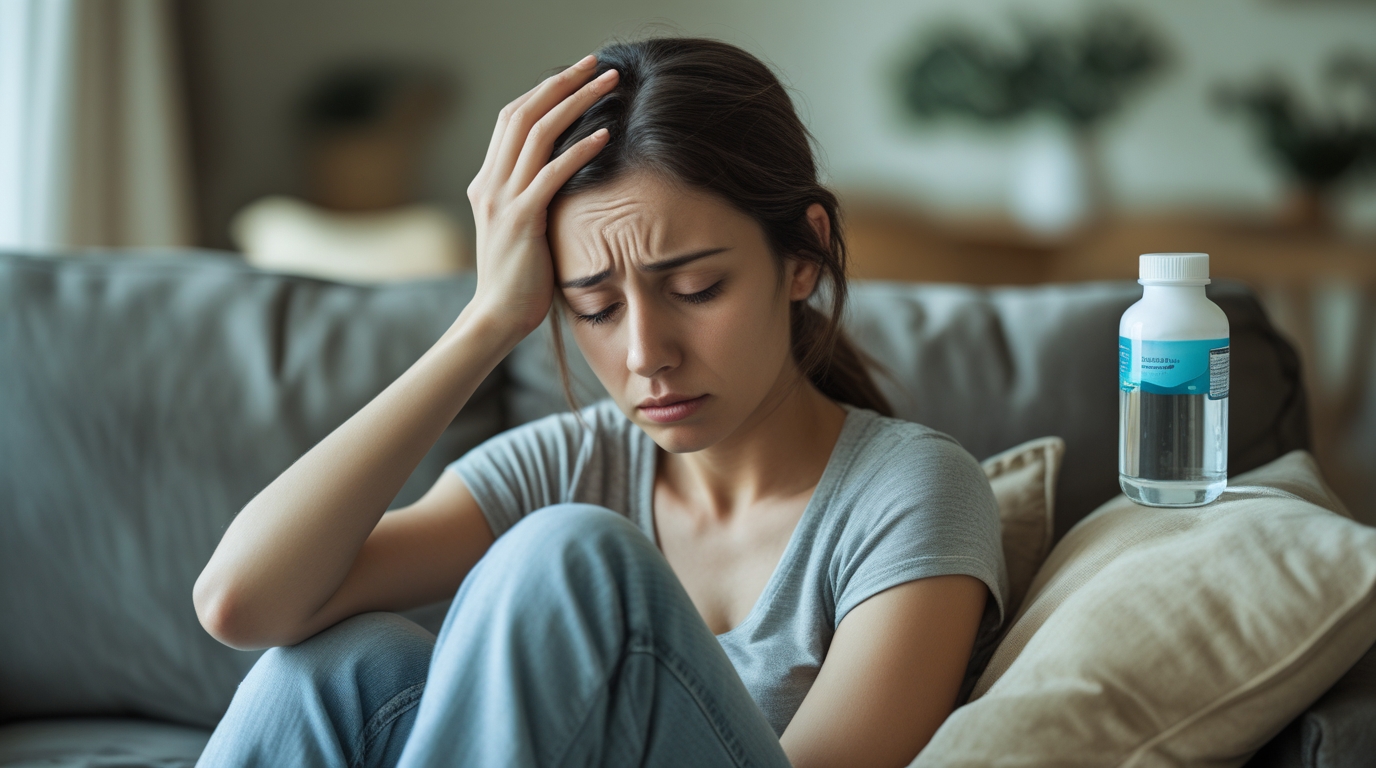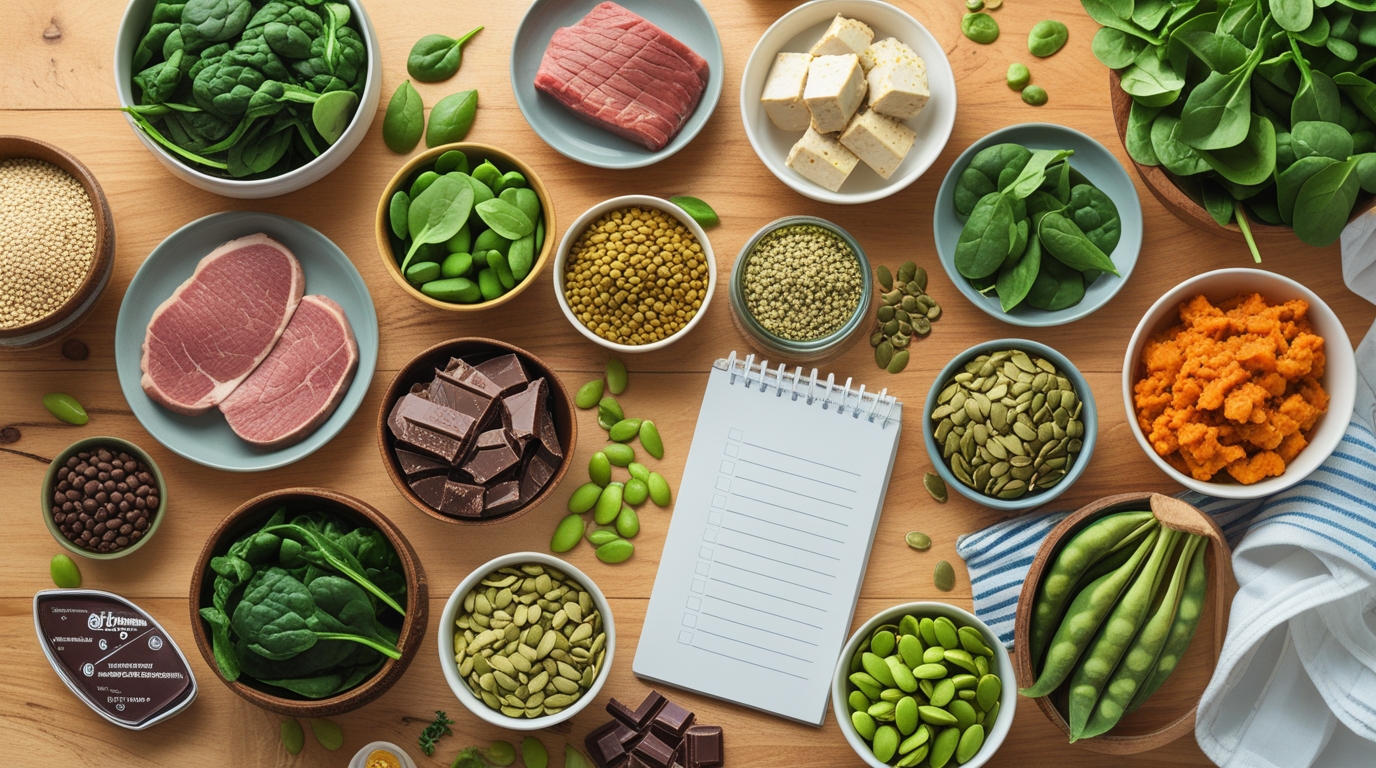Iron deficiency is one of the most essential and common nutritional deficiencies, affecting millions of people globally in 2025. It plays a vital role in transporting oxygen in the blood and supporting both metabolism and immune function. When iron levels drop, your energy, health, and focus can suffer. Yet, many people don’t recognize the symptoms until they worsen.
In this 2025 guide, we’ll explore the top signs your body may be low on iron, how to identify the symptoms early, and steps you can take to restore healthy levels.
Why Iron Deficiency Happens
When your body doesn’t have enough iron to make hemoglobin, the protein in red blood cells that carries oxygen, you have an iron deficit. Pregnancy, persistent blood loss (such as heavy menstruation), poor diet, or improper iron absorption can all cause it.
Learn more about iron deficiency in women here: Iron Deficiency Symptoms in Women
Also see: Mayo Clinic – Iron deficiency anemia
Top Signs Your Body Is Low on Iron
1. Fatigue and Weakness
Feeling constantly tired despite adequate sleep? Iron helps carry oxygen to your cells — low levels mean your body works harder for energy, leading to fatigue and muscle weakness.
2. Pale Skin
Your skin may appear paler than usual if you have an iron deficiency, particularly on the cheeks, inside your eyelids, and around your nails. This occurs as a result of decreased hemoglobin levels.
3. Shortness of Breath
Do you feel winded even after light activity? With less oxygen reaching muscles, your body compensates by increasing your breathing rate.
4. Cold Hands and Feet
Poor circulation due to low iron can result in consistently cold extremities, even in warm weather.
5. Headaches and Dizziness
Frequent headaches and dizziness may result from decreased oxygen delivery to the brain. It’s time to examine your iron levels if these symptoms are new or getting worse.
6. Chest Pain or Irregular Heartbeat
In more severe cases, iron deficiency can lead to heart palpitations or chest pain because your heart has to work harder to pump oxygen-rich blood.
7. Brittle Nails and Hair Loss
Thin, brittle nails and increased hair shedding can be signs of iron deficiency anemia. When iron levels are low, the body prioritizes vital functions, leaving hair and nails undernourished.
8. Cravings for Non-Food Items (Pica)
Unusual cravings for substances like ice, clay, or dirt may be a sign of iron deficiency. This condition, known as pica, should not be ignored.
9. Restless Legs Syndrome (RLS)
Some individuals with low iron may experience uncomfortable leg sensations at night, often described as crawling or tingling, a condition linked to RLS.
10. Frequent Infections or Poor Immunity
Iron supports immune cell function. Low iron can weaken your immune system, making you more prone to getting sick.
Who’s Most at Risk?
- Women of reproductive age
- Pregnant women
- Vegans and vegetarians
- People with gastrointestinal disorders (like celiac disease)
- Frequent blood donors
Learn more in our article on Iron-Rich Foods
Boosting Iron Naturally
Eat Iron-Rich Foods:
Include both heme (animal-based) and non-heme (plant-based) sources:
- Beef, chicken, liver
- Spinach, lentils, chickpeas
- Fortified cereals
- Pumpkin seeds
Combine With Vitamin C:
Vitamin C enhances iron absorption. Pair spinach with lemon juice, or drink orange juice with meals.
Read our full Vitamin D Guide for Americans — Vitamin D helps support overall mineral balance.
Avoid These During Iron Intake:
- Tea/coffee (contains tannins that reduce absorption)
- High-calcium foods or supplements near iron meals
Explore more about how nutrients interact by reading our guides on Magnesium Benefits and High Calcium in Blood.
Also read: Cleveland Clinic – Iron-Deficiency Anemia
Recommended Iron Supplements
- Nature Made Iron 65 mg Tablets – Check on Amazon
- MegaFood Blood Builder Iron Supplement – See on Amazon
(Affiliate links – we may earn a small commission at no extra cost to you)
FAQs about Iron Deficiency
How long does it take to correct an iron deficiency?
With diet changes and supplements, mild deficiencies improve in a few weeks. Severe cases may take 2–3 months.
Can I check my iron levels at home?
Some home test kits are available, but an accurate diagnosis requires a blood test from a laboratory.
Should I take iron daily?
Only if prescribed. Unneeded iron can cause constipation or toxicity. Talk to your doctor first.
Is iron deficiency reversible?
Yes. With proper treatment, diet, and monitoring, iron levels can be fully restored.
Conclusion on Iron Deficiency
Iron deficiency can affect your energy, immunity, and day-to-day functioning without being noticeable. Don’t disregard these warning indicators if you see them. Get examined, make dietary changes, and, if necessary, think about taking supplements.
See our other vitamin and mineral tips to be informed and healthy. Keep in mind that prevention is preferable to treatment and that your health is worth every effort.
Call to Action
Was this article helpful? Share it with a friend who might need it!
Bookmark FitFusionBlogs.com for more wellness tips
Comment below: Have you experienced any of these symptoms?
Disclaimer
This content is for informational purposes only and is not a substitute for professional medical advice. Always consult with a qualified healthcare provider regarding your health concerns.
Last Updated: July 6, 2025



